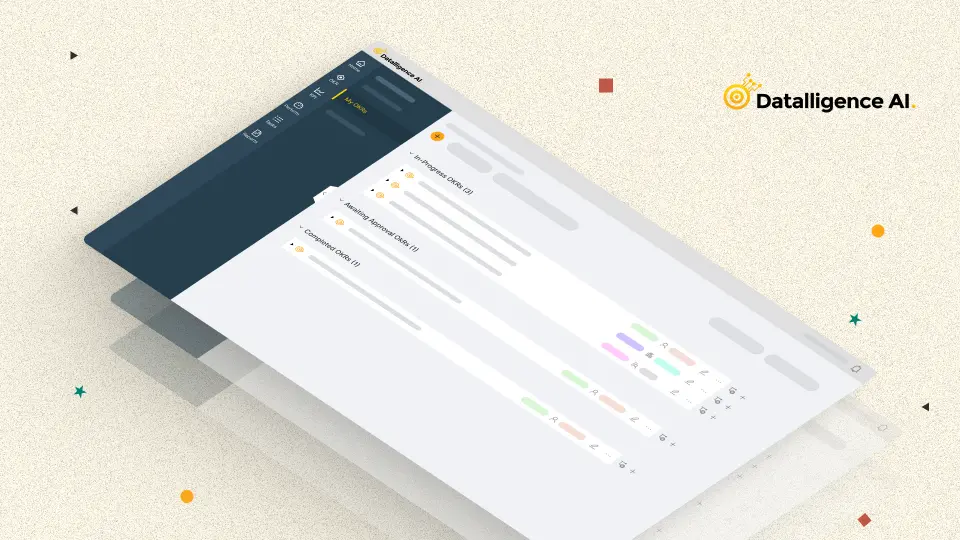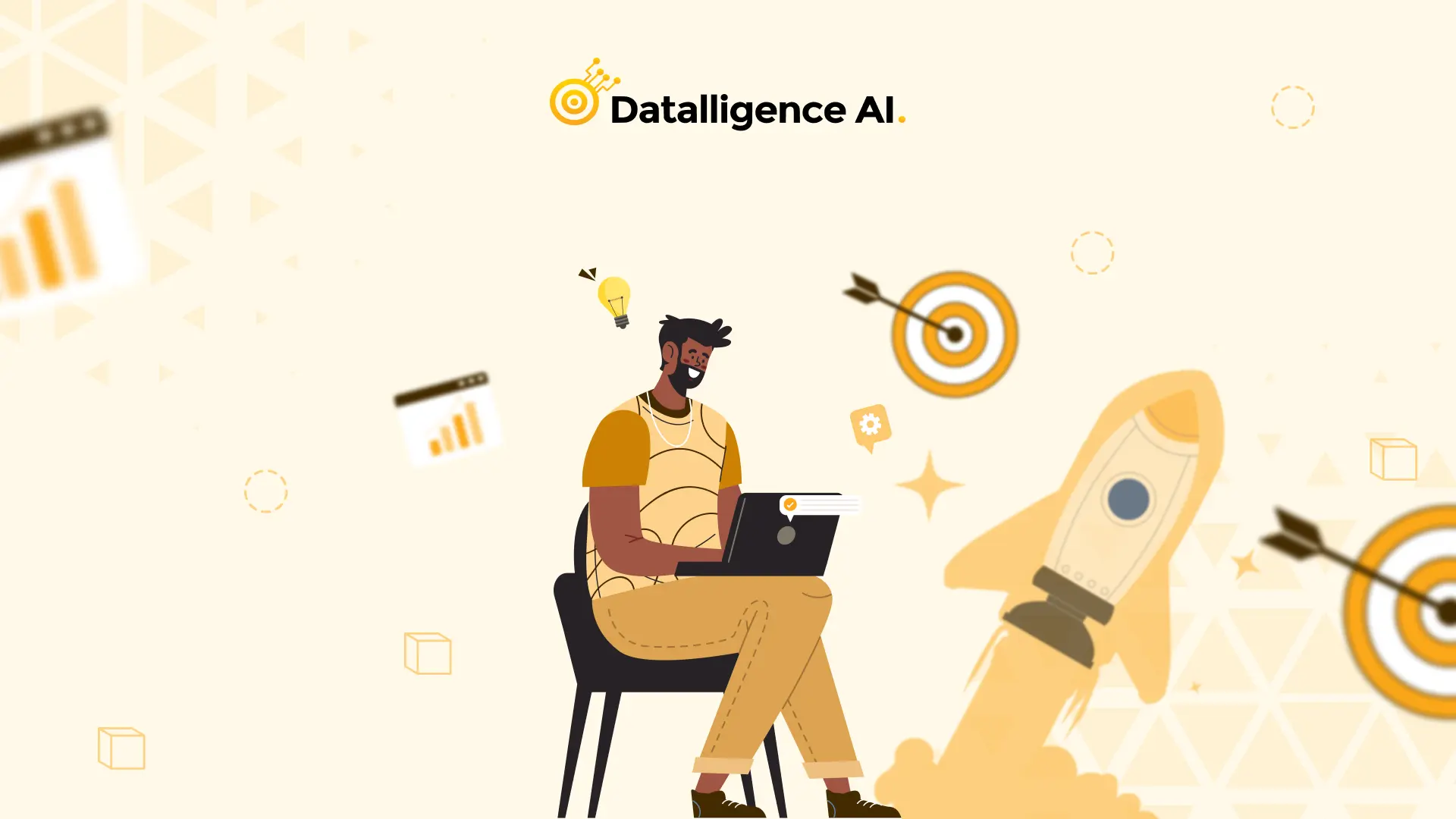In today’s data-driven world, organizations rely on data analytics to gain valuable insights, make informed decisions, and drive business growth. Companies are adopting the Objectives and Key Results (OKR) framework to maximize the effectiveness of data analytics initiatives. OKRs provide a systematic approach to setting goals, measuring progress, and aligning teams toward achieving desired outcomes.
This article will explore 10 examples of OKRs specifically tailored for data analytics teams. These examples will demonstrate how organizations can leverage OKRs to enhance performance, improve data quality, and drive actionable insights. Whether you are a data analyst, a data scientist, or a team leader in data analytics, these OKRs will serve as a guide to propel your organization toward success in the digital age.
Data Analytics OKR Examples
Data analytics has become a critical component in driving business growth and decision-making across various industries. As the demand for insightful data analysis continues to rise, organizations are leveraging Objectives and Key Results (OKRs) to set clear goals and measure their progress. In this article, we will explore the power of data analytics OKRs and provide you with examples of how they can be implemented to drive success in your organization.
1. Enhancing Data Quality
Objective: Improve Data Accuracy and Reliability
Key Results :
- KR1: Increase data accuracy by 20% within the next quarter.
- KR2: Reduce data entry errors by 30% through process improvements.
- KR3: Implement data cleansing processes to ensure data integrity.
To excel in data analytics, organizations must prioritize data quality. By setting objectives to improve data accuracy and reliability, teams can ensure that the insights derived from data analytics are trustworthy and valuable. Key results include reducing data entry errors, implementing data cleansing processes, and enhancing data validation procedures.
2. Driving Data-Driven Decision Making
Objective: Enable Data-Driven Decision Making Across the Organization
Key Results:
- KR1: Increase the usage of data analytics tools and platforms by 50% within the next six months.
- KR2: Train 80% of employees on data literacy and analytics best practices.
- KR3: Implement a data governance framework to ensure data integrity and security.
To leverage the full potential of data analytics, organizations must foster a data-driven culture. This objective focuses on enabling data-driven decision-making across the organization by improving data literacy, increasing the usage of analytics tools, and establishing data governance practices. By achieving these key results, organizations can ensure that data-driven insights drive strategic decision-making at all levels.
3. Improving Data Visualization and Reporting
Objective: Enhance Data Visualization and Reporting Capabilities
Key Results:
- KR1: Create interactive dashboards for key stakeholders to visualize data insights in real-time.
- KR2: Reduce the time taken to produce reports by 50% through automation.
- KR3: Improve the clarity and effectiveness of data presentations and reports.
Data visualization and reporting play a crucial role in communicating data insights effectively. This objective focuses on enhancing data visualization and reporting capabilities by creating interactive dashboards, automating report generation processes, and improving the clarity of data presentations. By achieving these key results, organizations can empower stakeholders to make informed decisions based on visually appealing and actionable data insights.
4. Increasing Data Analytics Efficiency
Objective: Improve Efficiency and Productivity in Data Analytics Processes
Key Results:
- KR1: Reduce the time taken to perform data analysis tasks by 30% through process optimization.
- KR2: Implement data automation techniques to streamline data preprocessing and cleaning.
- KR3: Improve collaboration and knowledge sharing among data analytics teams.
Efficiency is key in data analytics processes. This objective aims to improve efficiency and productivity by reducing the time taken to perform data analysis tasks, implementing automation techniques, and fostering collaboration among data analytics teams. By achieving these key results, organizations can enhance the speed and accuracy of data analytics processes, leading to quicker insights and more informed decision-making.
5. Enhancing Data Security and Privacy
Objective: Strengthen Data Security and Privacy Measures
Key Results:
- KR1: Implement robust data encryption protocols to protect sensitive information.
- KR2: Conduct regular audits to identify and mitigate data security risks.
- KR3: Train employees on data security best practices to ensure compliance.
Data security and privacy are critical considerations in data analytics initiatives. This objective focuses on strengthening data security measures by implementing encryption protocols, conducting regular audits, and providing training on data security best practices. By achieving these key results, organizations can safeguard sensitive data, maintain customer trust, and adhere to regulatory requirements.
6. Promoting Data Governance and Compliance
Objective: Establish Effective Data Governance and Compliance Frameworks
Key Results:
- KR1: Develop and implement data governance policies and procedures.
- KR2: Conduct regular data quality assessments and audits.
- KR3: Ensure compliance with relevant data protection regulations.
Data governance and compliance are essential for maintaining data integrity and adhering to legal requirements. This objective aims to establish effective data governance frameworks by developing policies, conducting quality assessments, and ensuring compliance with data protection regulations. By achieving these key results, organizations can maintain data consistency, accuracy, and compliance, enabling more reliable data analytics outcomes.
7. Optimizing Data Infrastructure and Architecture
Objective: Improve Data Infrastructure and Architecture for Scalability and Performance
Key Results:
- KR1: Upgrade data storage and processing systems to handle larger datasets.
- KR2: Optimize data pipelines for faster data ingestion and processing.
- KR3: Implement cloud-based data solutions to improve scalability and flexibility.
Data infrastructure and architecture lay the foundation for efficient data analytics operations. This objective focuses on optimizing data infrastructure and architecture by upgrading systems, optimizing data pipelines, and leveraging cloud-based solutions. By achieving these key results, organizations can ensure that their data infrastructure can handle larger datasets, process data more efficiently, and scale as needed.
8. Developing Advanced Analytics Capabilities
Objective: Build Advanced Analytics Capabilities for Predictive and Prescriptive Analytics
Key Results:
- KR1: Hire and train data scientists to develop advanced analytics models.
- KR2: Implement machine learning algorithms to enable predictive analytics.
- KR3: Deploy prescriptive analytics solutions to optimize decision-making.
Advanced analytics techniques such as predictive and prescriptive analytics, can unlock valuable insights for organizations. This objective focuses on building advanced analytics capabilities by hiring and training data scientists, implementing machine learning algorithms, and deploying prescriptive analytics solutions. Organizations can leverage advanced analytics to make data-driven predictions and optimize decision-making by achieving these key results.
9. Cultivating a Culture of Continuous Learning and Improvement
Objective: Foster a Culture of Continuous Learning and Improvement in Data Analytics
Key Results:
- KR1: Establish a knowledge-sharing platform for data analytics professionals.
- KR2: Encourage employees to pursue professional development opportunities in data analytics.
- KR3: Recognize and reward individuals for innovative data analytics solutions.
Continuous learning and improvement are essential in the rapidly evolving field of data analytics. This objective aims to foster a culture of continuous learning by establishing knowledge-sharing platforms, encouraging professional development, and recognizing individuals for their contributions to data analytics. By achieving these key results, organizations can cultivate a culture of innovation, collaboration, and excellence in data analytics.
10. Measuring Data Analytics ROI
Objective: Measure the Return on Investment (ROI) of Data Analytics Initiatives
Key Results:
- KR1: Define and track key performance indicators (KPIs) to measure the impact of data analytics initiatives.
- KR2: Conduct regular ROI assessments to evaluate the effectiveness of data analytics projects.
- KR3: Align data analytics activities with organizational goals to maximize ROI.
Measuring the ROI of data analytics initiatives is crucial for evaluating their effectiveness and demonstrating their value to the organization. This objective focuses on defining and tracking KPIs, conducting ROI assessments, and aligning data analytics activities with organizational goals. By achieving these key results, organizations can ensure that their data analytics initiatives deliver tangible business outcomes and generate a positive ROI.
Conclusion
In the era of data-driven decision-making, organizations must leverage the power of data analytics to gain a competitive edge. By aligning your OKRs with these data analyst performance goals examples, you can effectively track progress, motivate your team, and ultimately achieve your objective of a more efficient and impactful data analysis function. The 10 examples of Data Analytics OKRs presented in this article provide a roadmap for organizations to enhance data quality, drive data-driven decision-making, improve efficiency, and achieve measurable outcomes. Whether you are a data analyst, data scientist, or a team leader, these OKRs will guide you toward unlocking the full potential of data analytics in your organization.
Remember, for comprehensive OKR tracking and management, consider utilizing our company, Datalligence.AI, advanced OKR software. With our solution, you can streamline your OKR implementation, track progress, and drive success in your data analytics journey. Embrace the power of OKRs and propel your organization towards data-driven excellence.
Explore our website to learn more about our OKR software and how it can revolutionize your data analytics initiatives. Let Datalligence.AI be your trusted partner in unlocking the true potential of your data analytics endeavors.











